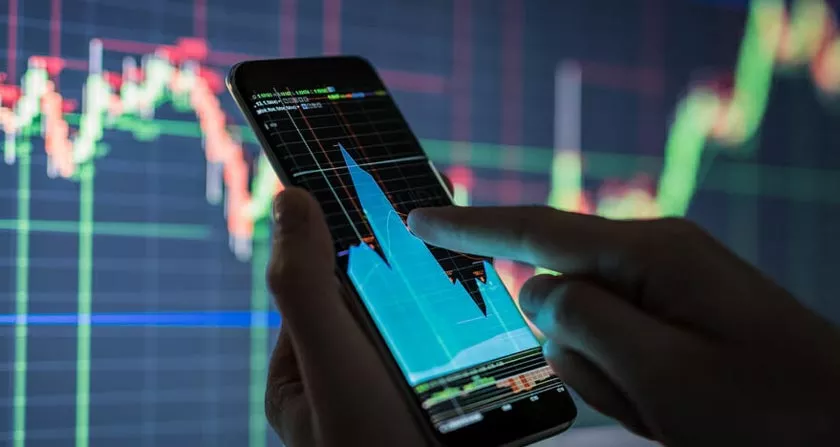Due mostly to technology improvements, trading has experienced a substantial transition in today’s frantic financial markets.

In today’s fast-paced trading market, comprehending the transformational effect of technology becomes essential as rapid innovations continue to influence the trading landscape.
Traditional Trading Methods
Before computerized trading was developed, stock exchanges used human operations. To help them make trading decisions, brokers and investors used genuine paper records and indexes.
The lack of real-time data, such as nasdaq futures live, the possibility of human mistakes, and the low transaction rates were issues with these outdated trading methods. The world of today rendered them obsolete.
Making Use of Technology in Investing
The stock trading industry underwent a sea change with the introduction of computerized trading platforms in the digital age. These techniques made international transactions immediate and significantly shortened the deal execution time.
- Algorithmic Trading: To automate trade executions when conditions are favorable and minimize the need for human intervention, traders adopted algorithmic trading, which involves using mathematical models and algorithms.
- High-frequency trading: Techniques used to exploit minute market inefficiencies that may execute many deals in a millisecond or less. Deals were closed quickly, which gave dealers time to refine their tactics.
The efficiency and liquidity of the market were considerably improved with the introduction of automated and high-frequency trading.
Because these technologies used automated processes and speedier transaction processing, markets responded more quickly to events that happened in real-time.
Technological Advances in Trader
Cryptocurrencies and Blockchain
Trader cryptocurrencies, which previously exclusively contained Bitcoin, may now incorporate virtual currencies like Ethereum and Ripple. As these virtual currencies gained popularity, new forms of exchange were made possible, and traditional banking institutions faced difficulties.
Trading using Artificial Intelligence
An increasing number of traders are employing machine learning algorithms to predict market movements. By considering historical performance and market patterns, these algorithms enable traders to adjust their trading strategies.
- Analytical prediction: Through extensive database analysis, these technologies provided traders with valuable insights about potential future shifts in the market.
- Bot trading and robot advisors: These automated systems manage portfolios and offer investment advice using algorithms, doing away with the need for human intervention and perhaps boosting portfolio results.
Obstacles and Fears
Regulatory Difficulties: Due to the rapid advancement of technology in trading relative to established regulatory frameworks, there are frequently gray areas in compliance. Investments in fledgling fintech companies may be riskier because they operate in less regulated industries.
Issues of Ethics: Concerns over the potential for some market participants to receive unfair advantages have been raised by the use of algorithms and high-frequency trading strategies. Certain AI-driven decision-making processes might be opaque, which can lead to transparency issues.
Market Volatility: The rapid dissemination of information and algorithmic reactions brought about by technology have led to a rise in volatility, particularly in the bitcoin trading space. To learn more, visitVectorVest.
Data Security: As trading platforms become increasingly digital, concerns regarding data leaks and cyberattacks have grown. Sensitive data must be protected by robust cybersecurity measures.
Technology-Based Trading Strategies
Trading Quantitatively
To find trading opportunities, quantitative trading employs mathematical algorithms. Through the analysis of vast amounts of data, such as past prices and transaction volumes, it provides a rational approach to trading by forecasting future market movements.
Survey of Sentiment
Traders use information from social media, financial reports, and news sources to determine the mood of the market. With this method, traders can gain distinct insights into market dynamics that go beyond conventional measures and public sentiment analysis.
Accounting Behavior
This method helps traders make more informed judgments and steer clear of frequent pitfalls by acknowledging the influence of human emotions and biases on financial decisions.
Using Technology to Manage Risks
Artificial intelligence (AI) and big data analytics are examples of modern technology technologies that help traders recognize and control risks more successfully. This enables trading tactics to be modified to optimize gains and reduce possible losses.
Impact on Traditional Financial Institutions
Conventional financial institutions are being challenged by digital trading platforms. As more people and businesses have better access to trade, traditional financial institutions face the risk of falling behind.
Exchanges for the Market
To remain competitive in today’s market, even the oldest exchanges are adopting new technologies like electronic trading and considering blockchain-based alternatives.
Effects on the Job Market
Floor traders and other traditional jobs may become outdated due to fintech and data science’s growing reliance on technology. The work market is evolving due to the increased need for IT capabilities.
Analyzing How Technology Affects Trading
The significant disruption that has taken place in the trading sector is mostly the result of technology. Because of the introduction of computerized trading, the rise of AI-driven strategies, and the creation of DeFi platforms, the environment is evolving faster than it has in the past.
As established institutions find it more and more difficult to keep up with these advancements, there is an increasing need for creativity and adaptation.
Looking ahead, one thing is certain: technology will continue to be the primary force behind trade expansion, providing the financial sector with new prospects and accessibility.
